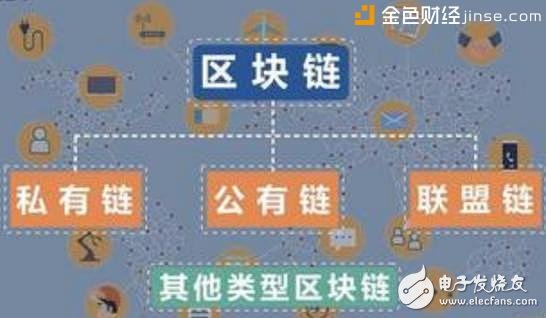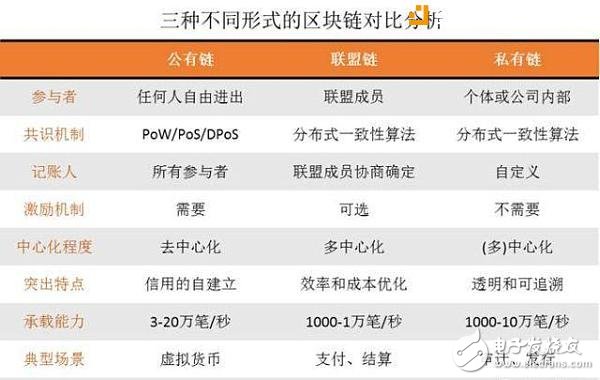1.1, public chain
Public chain, also known as public blockchains, refers to a blockchain that anyone in the world can access to read data, send acknowledgable transactions, and compete for accounting at any time. Public chains are often considered "completely decentralized" because no individual or institution can control or tamper with the reading and writing of data.
Anyone can participate in the blockchain of the consensus process—the consensus process determines which blocks can be added to the blockchain and clarify the current state. As a substitute for centralized or quasi-centralized trust, the security of the public blockchain is maintained by the “encrypted digital economy†– the “encrypted digital economy†adopts the workload proof mechanism or the equity proof mechanism to award economic rewards and encrypted numbers. Verification is combined and follows the general principle: the economic rewards that each person receives are directly proportional to the contribution to the consensus process. These blockchains are often considered to be "completely decentralized."
The public chain generally encourages participants to compete for accounting through the token mechanism to ensure data security. Bitcoin and Ethereum are typical public chains.

1.2, the alliance chain
The alliance chain, also known as the ConsorTIum blockchains, refers to a blockchain with several organizations participating in the management. Each organization runs one or more nodes, and the data only allows different institutions in the system to perform Read, write, and send transactions, and work together to record transaction data. For example, imagine a community of 15 financial institutions, each running a node, and in order for each block to be effective, it needs to be confirmed by 10 of them.
The blockchain may allow everyone to read, or be restricted to participants, or take a hybrid route, such as the root hash of the block and its API (application programming interface), which allows the outside world to be used. Make a limited number of queries and get information about the status of the blockchain. These blockchains can be thought of as "partial decentralization."
1.3, private chain
Private chains, also called Fully private blockchains, refer to blockchains whose write permissions are controlled by an organization and an organization. The qualification of participating nodes is strictly limited. Since participating nodes are limited and controllable, private chains can often have extremely fast transaction speeds, better privacy protection, lower transaction costs, are less vulnerable to malicious attacks, and are required for identity authentication and other financial industries. Requirements.
Compared to a centralized database, the private chain can prevent a single node in the organization from intentionally concealing or tampering with the data, and can quickly discover the source even if an error occurs. Therefore, many large financial institutions are now more inclined to use private chain technology.
The design privacy permissions between the private chain and the alliance chain will be different, and the permission design requirements in the alliance chain will often be more complicated.
2, the characteristics of various chains
2.1, public chain
l Low access threshold
l All data is public by default
l Users are protected from developers
2.2, the alliance chain
l Trading speed is very fast
l Better protection for privacy
l Transaction costs are greatly reduced
2.3, private chain
l Low cost operation and maintenance
l High transaction speed and good scalability
l Alliance maintenance, more credibility than the private chain
3, the contrast between the various chains

3.1, public chain
l Protect users from developers
Program developers have no right to interfere with users in the public blockchain, so blockchains can protect users who use programs they develop. From a naive point of view, it is difficult to understand why program developers are willing to give up their permissions. However, the more advanced economic analysis provides two reasons for this: To borrow the words of Thomas Schelling, compromise is a force. First, if you explicitly choose to do something that is difficult or impossible, others will be more likely to trust you and interact with you because they are confident that those things are unlikely to happen to them. Second, if you are forced by people or other external factors and cannot do what you want to do, you can say "even if I want, but I have no power to do it" as a bargaining chip. Discourage the other party from forcing you to do reluctance. The main pressures or risks faced by programmers are mainly from the government, so the “review of resistance†is the biggest advantage of the public blockchain.
l Network effect
The public blockchain is open, so it is likely to be used by many outside users and have a certain network effect. For a specific example, let's take the domain hosting. Now, if A wants to sell a domain name to B, there is a risk problem that needs to be resolved: If A first sells the domain name, but B may have not given the money; or if B gives money, but A has not sold the domain name. In order to solve this problem, we have to set up a centralized hosting agency, but we have to pay a three to six percentage point fee. However, if we have a domain name system on the blockchain and use the currency of the blockchain, then we can create a smart contract with a transaction fee as low as 0: A sells the domain name to the system, and the system immediately sells the domain name to the first The person who pays the money, and because the system is built on the public blockchain, it is trustworthy. But note that in order to make the trading process more efficient, it is impossible to put completely different assets from completely different industries on the same public database - this is not easy to do in the private blockchain. The same example can be land registration and title insurance, but note that if you want to be interactive, use a private blockchain that can be verified by the public blockchain so that transactions can be completed across chains.
2.2, the alliance chain


Lighting Pole,Steel Lamp Pole,Street Light Poles,Garden Lamp Post
YIXING FUTAO METAL STRUCTURAL UNIT CO.,LTD( YIXING HONGSHENGYUAN ELECTRIC POWER FACILITIES CO.,LTD.) , https://www.chinasteelpole.com